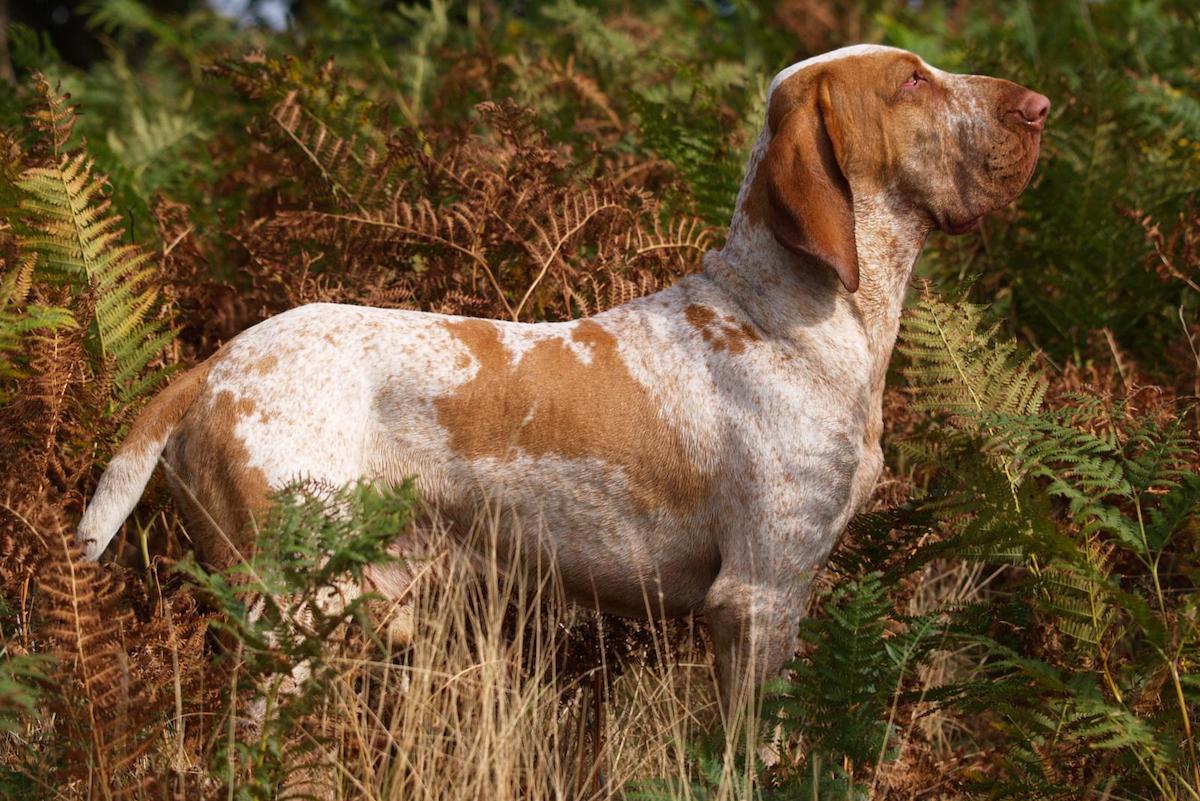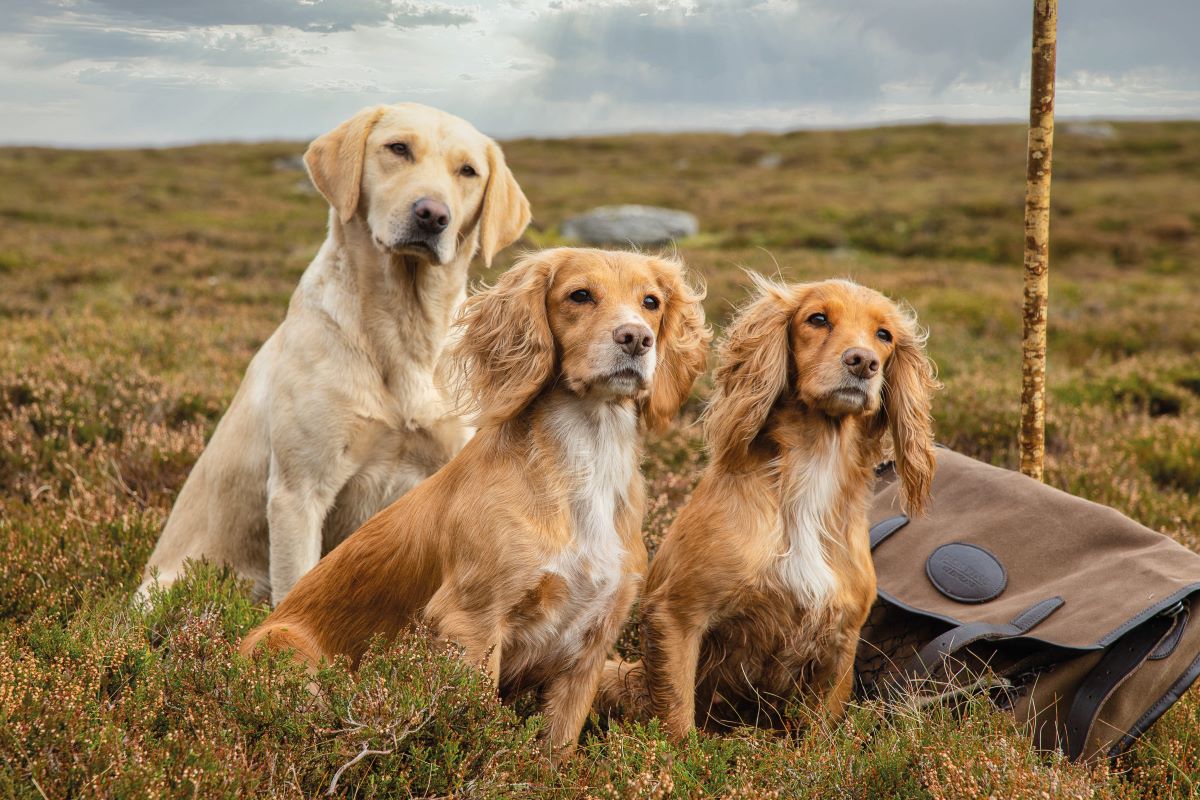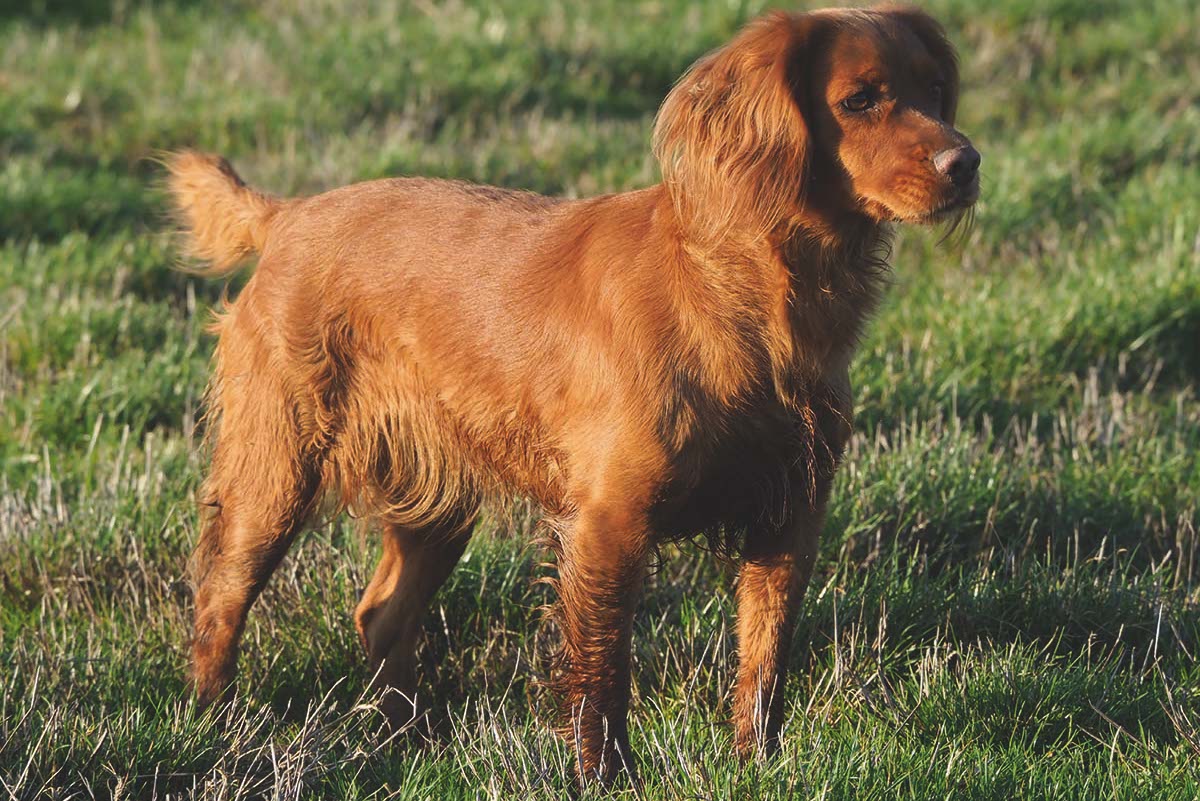Which is the best hunt, point and retrieve gundog?
Trainer and trialler Rory Major is a hunt, point and retrieve (HPR) specialist and tells David Tomlinson which gundog breeds he rates

A Bracco Italiano
Rory Major of Bryantscroft Gundogs has probably trained and competed with more breeds of gundog than anyone else in the business and most breeds of hunt, point and retrieve gundog (HPR).
So who better to ask which is the best hunt, point and retrieve gundog breed. Reader, I did just that. (Read training an HPR breed.)
https://www.instagram.com/p/CE96_jLB3Ns/
Rory’s top HPR breeds

A German wirehaired pointer
1. German wirehaired pointer
Rory has a long relationship with the breed so perhaps it is not surprising that the German wirehaired pointer (GWP) is Rory’s top hunt, point and retrieve gundog. He comments: “It is more workmanlike than any of the other HPRs. They are keen to be trained but do need a firm hand: they make great family dogs, while for all-round work they will face anything. They are still a dual-purpose breed and there’s not much chance of them being spoiled by the show ring because they are so popular as working dogs, especially with deerstalkers an moorland keepers. Their wiry coats give them more protection when working. Perhaps the biggest problem facing the GWP is not breeding from proven working stock.” (Read which gundog breeds originated in Germany?)

Brittany gundog
2. Brittany
The Brittany is the most popular shoot dog in its native France and Rory believes it deserves to be much more popular here. He notes: “When I’m shooting with my friends they always want the Brits, not the wirehairs, because they will also go the extra miles and are so entertaining to watch. (Read more on the Brittany here.)
“The downside of them as a hunt, point and retrieve dog is that you have to be on top of them: I use my whistle a lot. They will always hunt wider and faster than any of the other HPRs although wirehairs might be more methodical. If you get them right they will do everything, from sitting on a peg to trialling, where they will be sure to catch the judge’s eye. As for retrieving, if you teach them properly they can be phenomenal.” (Read more on dog training with a whistle.)
3. Hungarian wirehaired vizsla
The growing numbers of fans of the Hungarian wirehaired vizsla won’t be surprised to see this breed, winner of the 2016 HPR championship. Rory says: “I’ve been involved with training them for 20 years, virtually since they first came into this country. Of all the HPRs it is the easiest to train, though a lot lack pace. If a German wirehaired pointer (GWP) has too much drive for you, I’d suggest you go for one of these. They do have all the same coat problems as GWPs but this doesn’t bother me at all.”

Large munsterlander
4. Large munsterlander
Rory comments: “Another breed that I can’t understand is not more popular: the trouble is that there are not enough people working them. They have bags of enthusiasm and will go all day, but you only see one or two decent ones in field trials. This is a breed on the up, as the recent important of German dogs seems to have improved their hunting ability. Remember that this is a woodland dog.”

German longhaired pointer
5. German longhaired pointer
” These are trememdously exciting dogs and relatively simple to train. They are great game finders and remind me of a setter but with a touch of HPR. I don’t understand why they haven’t caught on. I had one that was everything I wanted but she proved to be gun-shy so she went to a falconer. I’d have another one like a shot. They are good all-rounders and will have a go at everything.”

A German shorthaired pointer
6. German shorthaired pointer
The GSP was the first HPR to be imported here after World War II, and has long been the most numerous HPR in the UK, so it comes as a surprise to see Rory rank it at six, but remember that he much prefers dogs with thick coats. He explains: “In the 1980s and the first part of the 1990s, the GSP dominated in numbers and quality. They were truly dual-purpose, but from the late 1990s they went downhill. Only two or three kennels have maintained the standard. Imports of new German blood have helped hugely in recent years. In trials they are still very popular, so they tend to dominate the results.
7. Hungarian vizsla
“Really nice dogs and easy to train, and they make good house dogs too, like German shorthaired pointers (GSP)” says Rory. “They are at seven because they can be a little bit soft and they can get bogged down on scent, which slows them up. I don’t want a Velcro vizsla. Lots of vizslas are potterers and not enough people are breeding them for work. When you see a good one, you are reminded how impressive they can be.”
8. Braque Français
A breed that few of us know anything about. Says Rory: “I trained the first three to come into this country: they blew me away. However, my first impression was ‘what the hell is that?’ because they reminded me of a small English pointer crossed with a German shorthair. I was already shooting partridges over the first bitch I trained at 12 months old. They were really impressive.

A braque d’Auvergne; one type of braque Fracais
“However, they are difficult to get hold of. No one knows what they are and you can’t compete with them so no one sees them. I think of them as a bit like a souped-up Brittany — if there was a wire-haired variety I’d have one.”
9. Weimaraner
Though numerically one of the most popular of the HPRs in the UK, the Weimaraner is at nine. “The problem is in the breeding, for there are some absolutely wonderful Weimaraners in this country, but to get that quality the breeders have gone to Sweden and the US. These dogs will get out and run. Weimaraners used to be aggressive, but temperaments are now much improved. Some say that this has been at the expense of working ability, but the American dogs have great drive and temperaments. The Swedish bitches I’ve seen were stylish. I think that the Scandinavian-bred dogs suit us.”

The temperament of the Weimaraner has improved
10. Bracco Italiano
Another Italian dog. Rory notes: “I’ve never trained one, so my comments are based on observation. I regard them as a bit like a short-coated spinone but with more power and drive. Too popular in the show ring, so not enough people are breeding them for the purpose they were intended. They do look like a slow plodding hound.”

The bracco Italiano has power and drive but is slow
11. Spinone Italiano
Rory: “Alas, we don’t see the depth of quality on the working side as they are mainly concentrated in the show ring. I did have one called Ludo, which is now in the US. I’ve never had a dog that was so hard to stop. He had a serious issue with hares. On one occasion he chased a hare out of a field and disappeared, but when he came back I’d run out of things to say to him. However, when the next hare got up he sat down, so I made a huge fuss of him. He sat for the next pheasant, too, and suddenly became a steady biddable dog. They are big and hairy and have horrible beards. Low rating because we see so few good ones.”

Good working spinoni are hard to find says Rory
12. Korthals griffon
A French dog with Dutch ancestry. Rory comments: “You can look at the gri on as the soft answer to the German wire-haired pointer, but sadly they don’t seem to be the most trainable of dogs. Most that I have seen have been way out of control or not great retrievers, and I think they are much more difficult to train than a Brittany. The last one I had to train was an exception: his owners didn’t dare let him off a lead. I thought I’d never train him, but once he discovered the ground rules he was great.”

The Korthals griffon is not the most trainable of dogs

The Slovakian rough-haired pointer is good at beating
13. Slovakian rough-haired pointer
“I do have one [Rory currently has between 20 and 30 dogs of his own]. I do wonder whether the right strain was brought into the country. My dog will point and retrieve and potter, but he hasn’t got any drive. However, he is a great beating dog and when my wife, Jane, goes beating she always takes the Slovak.”
14. Portuguese pointer, small Munsterlander, pudel pointer
Rory is fascinated by new breeds but admits that he has no experience of a few. So at 14 we have three dogs, the Portuguese pointer, the small Münsterlander and the pudelpointer. “I have seen a Portuguese pointer, but never working, and I don’t think I’ve ever come across the other two, so no comment,” he says.
https://www.instagram.com/p/CEq5NdABRpp/
Would you agree with the hunt, point and retrieve gundog rankings?
It is significant that Rory’s number one, the GWP, is the most popular working gundog in Germany and his runner up, the Brittany, the most popular in France.
This article was first published in 2017 and has been updated.










